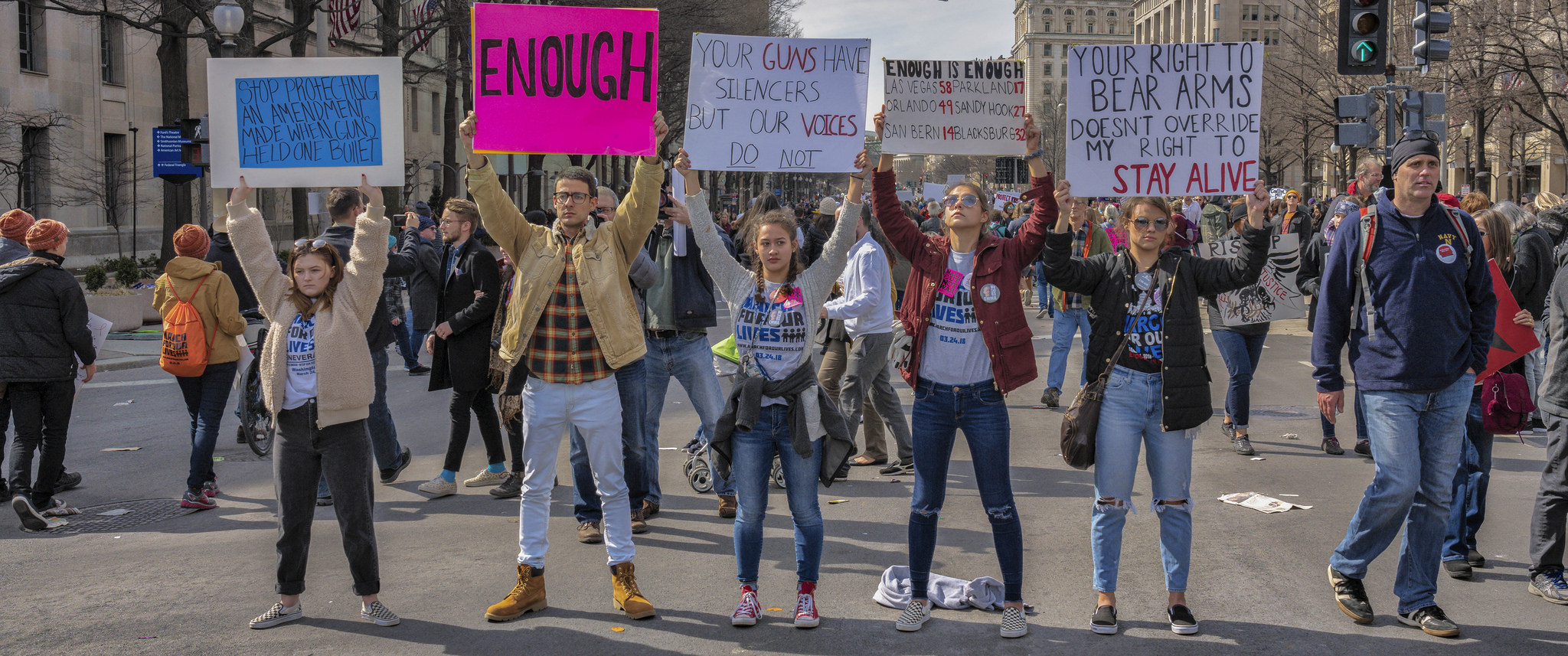—Ralph F. Young
To some extent, the passionate commitment to activism in the 1960s was spurred by the existential threat children felt during all those 1950s air raid drills in grade school and high school. As they matured it slowly dawned on them that the adults in power were doing nothing to create a more secure society, a more just society without racism, without Jim Crow, and so by the time they entered college they were determined to force the powers-that-be to act. Now young students are daily experiencing another kind of existential threat; the threat of being mowed down in their classrooms by AR-15s while the adults in charge in Washington do nothing but offer thoughts and prayers.
Something is happening here.
It’s not exactly overnight that things are changing. In the first decades of the twenty-first century young people have been growing increasingly anxious about the world they’re inheriting, just as young people in the 1950s were apprehensive about growing up in an unquestioning affluent society that offered nothing more meaningful than suburban cookie-cutter houses, grey flannel suit jobs, and the opium of TV sitcoms and westerns. At Temple University this activism is growing. Since 9/11, students have been attending weekly teach-ins hosted by the history department that examine the historical context of today’s complex controversial issues. Over the last few years, many Temple students have participated in demonstrations against the war in Iraq and the Patriot Act or become activists in the Occupy Movement and Black Lives Matter. But now this current wave of protest targeting the NRA and Congress led by the students from Marjorie Stoneham Douglas High School who organized the massive March for Our Lives on March 24th has the feeling of something much more powerful and compelling than anything seen since the 1960s.
Recall those four African American students sitting down at that Woolworth’s lunch counter in Greensboro, North Carolina, or the children marching and getting arrested in Birmingham in 1963. Recall the college and high school students who increasingly took to the streets protesting the draft and the war in Vietnam. It is clear that when young people feel physically threatened enough to mobilize and, more importantly, commit themselves to stay the course, then change is possible. The NRA, of course, is a formidable opponent. But so too were the forces of segregation today, segregation tomorrow, segregation forever, as was the deep-seated obsession to prevent communism from toppling the dominoes of Southeast Asia.
It is heartening to witness the passion and anger of this March for our Lives generation. And clearly, the passion and anger at the grassroots level are what is needed as a first step to confront the entrenched power of the NRA, the gun lobby, and the armaments industry. But it is not only about the NRA and the gun culture. And these students have shown that they are aware that we have to look at the foundations of that culture. It’s not just about interpretations of the Second Amendment (which most people don’t realize was devised to affirm the duty, in 1787, of each American citizen to be ready to fight against a foreign invasion at a time when there was no standing army in the United States), but more about the present-day deep-seated “fear of the other” that compels so many citizens to arm themselves. The fear that we must continue to protect ourselves from the outsider.
Gun control. Gun rights. The underlying racism, xenophobia, bigotry, and Anti-Semitism that still plague our country. To many, it is all too complicated to solve. But for young people who have their whole lives ahead of them, who have the passion and the will to live their lives fully in a free, just, and democratic society, it is not too complicated. It is a moral imperative. And it is common sense. There’s nothing like an existential threat to focus the attention and to galvanize young people into making a difference.
Ralph Young is Professor of History at Temple University. He is the author of Dissent: The History of an American Idea (NYU Press 2017) and Dissent in America: The Voices That Shaped a Nation.
Feature Image: March for Our Lives Enough by Mobilus In Mobili. CC BY-SA 2.0 via Flickr.

